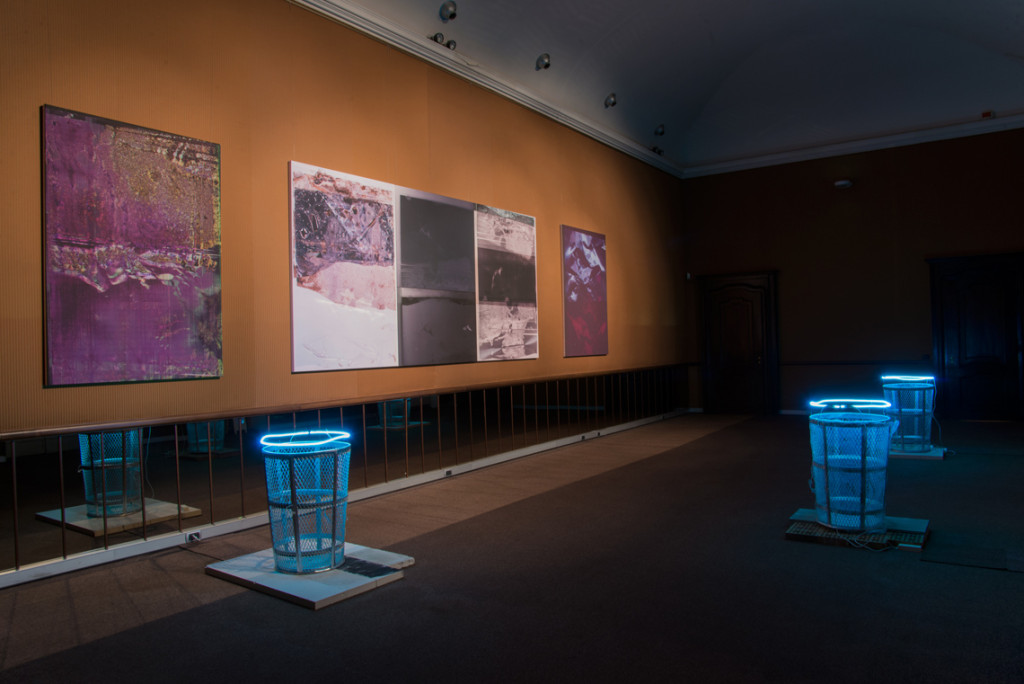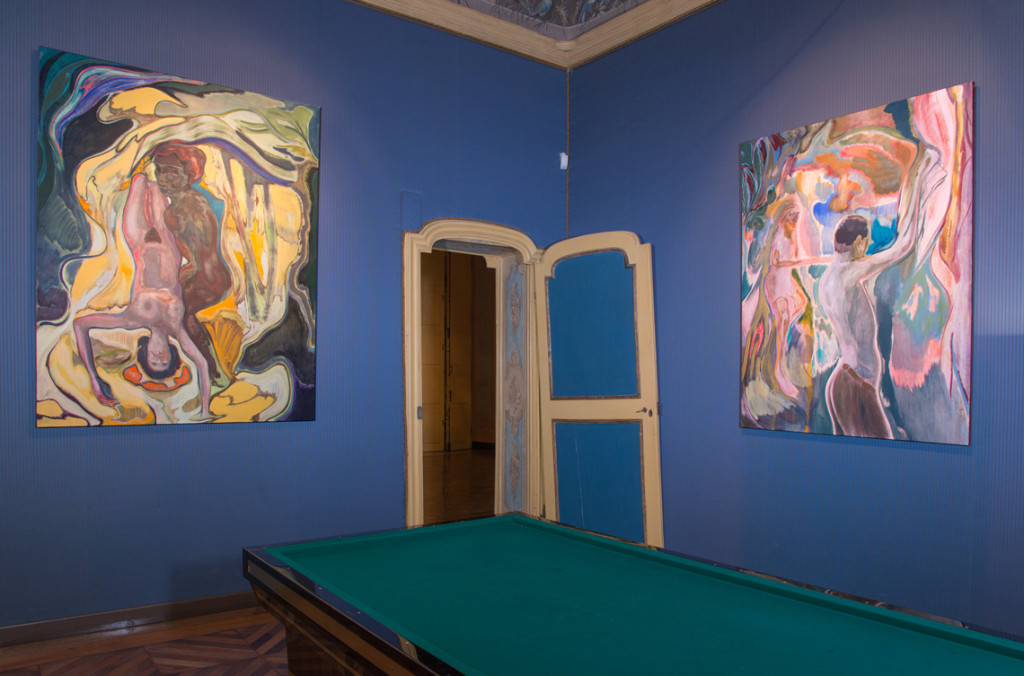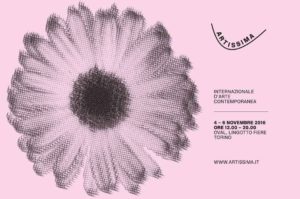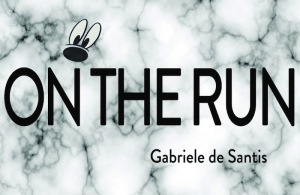Settled in the heart of the Palazzo Capris decor in Torino, Italy an exhibition by Michael Armitage, Paul Kneale and Tabor Robak at first raises the question of the iconographic tradition. It’s presented by ARTUNER during Artissima, running from November 5 to 12, and curated by Eugenio Re Rebaudengo, in a historic 17th century setting. The new bodies of work, by the three artists showing for the first time in Italy, are organized according to the architectural setup of the place; each participant proposing his own hanging in his own space. The rooms, sometimes autonomous –as with the ‘Miami Beach Trashcans’ and chromatic panorama of prints on linen in Kneale’s Room 2 –and sometimes linked to each other, divide spaces and articulate three solo shows, which dialogue with one another, as well as stating their own perspectives. Combining tradition and technological innovation, their respective approaches confront their techniques and media (scanner-printers on linen, acrylic paintbrush on lubugo and digital compositions on flat screens) to speak about the image, digital tradition and pictorial perception.

Kneale’s prints unite the classic notion of landscape with the painting form and the generative potentiality of the digital image. Spreading, multiplying and mocking, the work mimics the modus operandi of the image in the Age of the Internet. Using a scanner for a camera, Kneale aims to embody the imperceptible phenomenon of light, atmosphere, and time, watching for the appearance of the virtual in physical reality.
This mythology of the flesh is also at work in Armitage’s paintings on lubugo, through said resistant surface made from bark in Uganda. The iconography of East Africa, its urban or rural landscapes, its vernacular architecture, its luxuriant vegetation, its animal or human representations are here literally translated in paint and applied with a brush in an almost visceral movement. It leaves physical tracks, depositing its load of energy. Nevertheless this powerful physicality originates from the arborescence of a virtual database fed by the artist.

Taking his sources from online headlines, Armitage’s environment echoes the two screens of Robak, very much some kind of computer construction or maze-based game, such as Tetris, Snake or SimCity. These painting-panels actually mythologize the first uses of video animation through their museum display and their almost vintage aesthetic.
Always between tradition and technology, these three children of the 80s have been influenced by video games imagery and the advent of the internet, feeding traditional notions of art history –landscape, light, composition –with technical, formal but also intellectual shapes of digital advancements. “The thing that we call ‘Internet’ is a whole way of being in the world. It’s the Internet you know from your browser window, but also the Internet of things and materials, and also the Internet of minds, of tastes and feelings”, Kneale one told i-D in an interview.
The ultra-powerful and imperious matrix that the internet has become in almost two decades, finally re-defines the physical limits of a world that becomes a paradox, dissolves in time and in representations. Armitage, Kneale and Robak’s works try to chase the image to report its marks, what remains of it; trying to thwart its strategies of existence –or perhaps persistence. A ‘Selfiecide’ as is the name of one of Kneale’s large scanner-print capturing the vibrations of movement and light. Even if all of these images would finally disappear into Kneale’s twinkling and bright high tech garbages bins, the trash disappears to keep memory alive. **
















